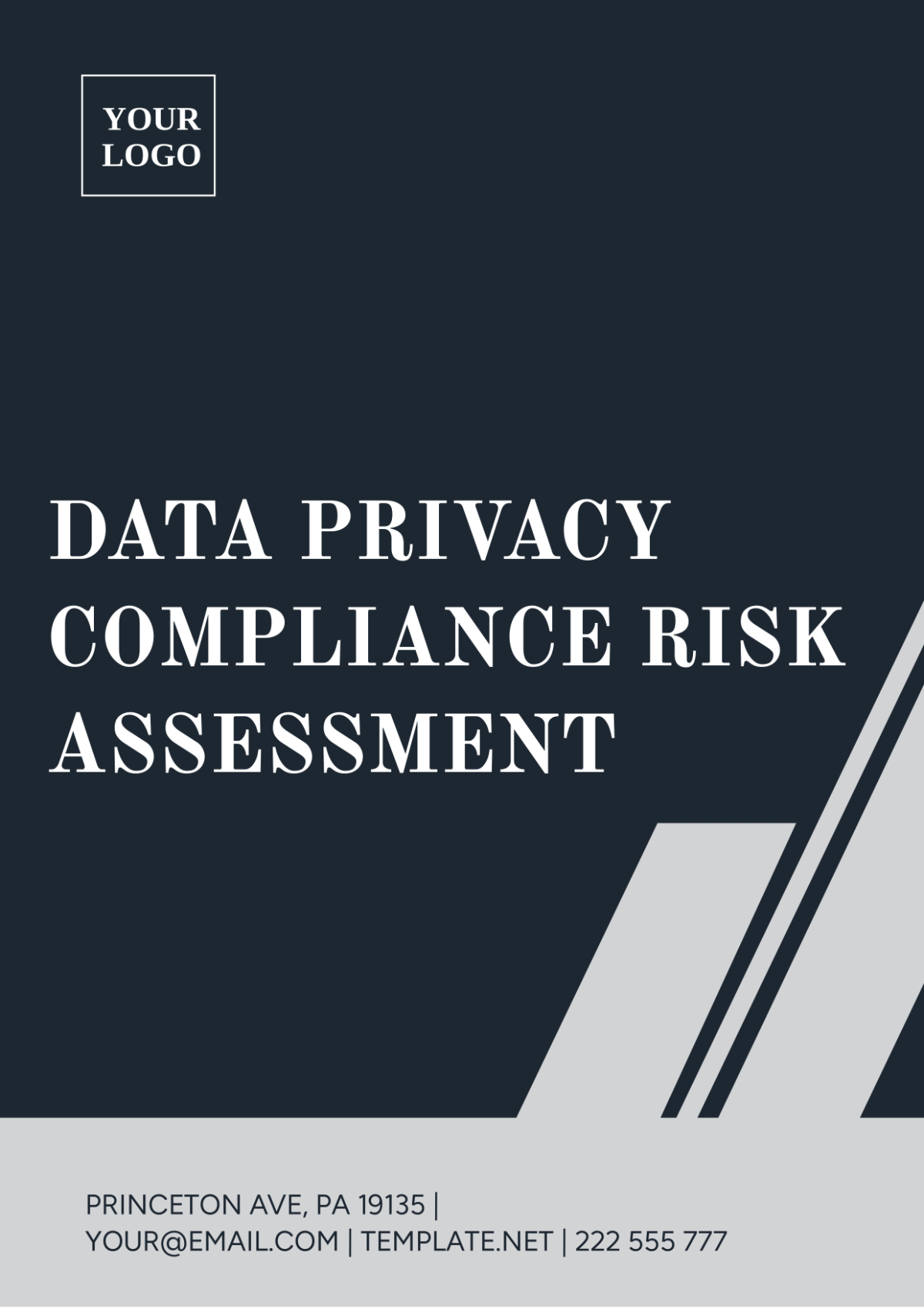Free Data Privacy Compliance Risk Assessment

I. INTRODUCTION
Review the purpose and scope of the data privacy compliance risk assessment.
Identify key stakeholders involved in the assessment process [Your Department].
Establish timelines and milestones for completing the assessment.
II. REGULATORY FRAMEWORK ANALYSIS
Identify applicable data protection laws and regulations
Review legal requirements and obligations relevant to the handling of customer data.
Evaluate any recent updates or changes in data privacy regulations.
III. DATA INVENTORY AND MAPPING
Compile an inventory of all customer data collected, processed, or stored by [Your Company Name].
Map the flow of data within the organization, including its storage locations and transmission channels.
Document the types of personal data collected, the purpose of processing, and data retention periods.
IV. DATA PRIVACY IDENTIFICATION
Identify potential risks and vulnerabilities associated with the handling of customer data.
Assess risks related to data breaches, unauthorized access, data loss, and non-compliance with regulations.
Consider risks arising from third-party data processors or service providers.
V. DATA PROCESSING PRACTICES EVALUATION
Evaluate current data processing practices and procedures against regulatory requirements.
Review data collection methods, consent mechanisms, and transparency in data processing.
Assess the effectiveness of data security measures and controls in place.
VI. PRIVACY IMPACT ASSESSMENT (PIA)
Conduct a Privacy Impact Assessment (PIA) for high-risk data processing activities.
Identify and assess the impact of data processing on individual privacy rights.
Document mitigating measures to address privacy risks identified in the PIA.
VII. DATA PRIVACY POLICIES AND PROCEDURES REVIEW
Review existing data privacy policies, procedures, and documentation.
Ensure alignment with regulatory requirements and best practices.
Update policies to reflect any changes in data processing activities or regulations.
VIII. EMPLOYEE TRAINING AND AWARENESS
Provide training and awareness programs on data privacy and security for employees.
Ensure employees understand their responsibilities regarding data protection.
Regularly communicate updates and changes in data privacy policies and procedures.
IX. INCIDENT RESPONSE AND BREACH NOTIFICATION
Develop an incident response plan to address data breaches and security incidents.
Define procedures for identifying, containing, and reporting data breaches.
Establish communication protocols for notifying affected individuals and regulatory authorities.
X. CONTINUOUS MONITORING AND IMPROVEMENT
Implement mechanisms for ongoing monitoring of data privacy compliance.
Conduct regular audits and assessments to identify areas for improvement.
Continuously update and refine data privacy measures to adapt to evolving threats and regulations.
XI. SIGNATURE
Ensure that [Your Company Name]'s Compliance Checklist is regularly reviewed and updated to reflect changes in laws, regulations, and business operations. Compliance is an ongoing process that requires continuous attention and improvement.

[Your Name]
Compliance Officer
Date: [Insert Date]
- 100% Customizable, free editor
- Access 1 Million+ Templates, photo’s & graphics
- Download or share as a template
- Click and replace photos, graphics, text, backgrounds
- Resize, crop, AI write & more
- Access advanced editor
Enhance and Discover the Data Privacy Compliance Risk Assessment Template by Template.net. This meticulously crafted tool is your key to navigating the complex realm of data privacy regulations. Fully editable and customizable, it streamlines risk assessment processes. Accessible via our Ai Editor Tool, ensure compliance effortlessly. Stay ahead with confidence and ease.





























